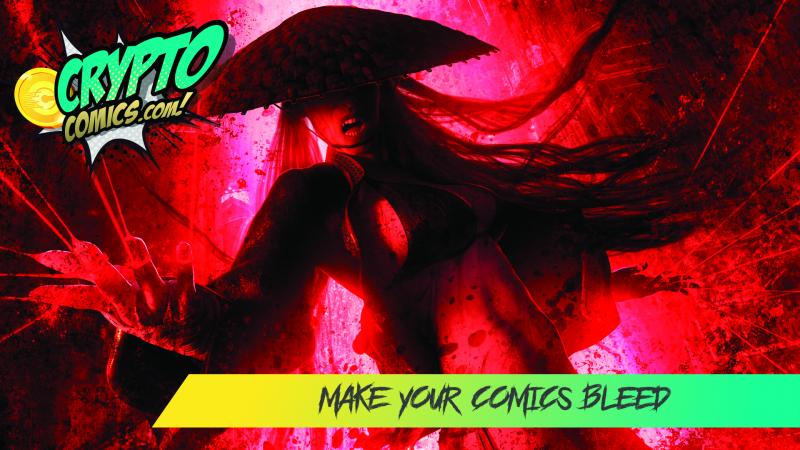by Matthew Russell - Posted 2 years ago

Welcome my CryptoComics Compatriots. Today we are going to talk about Bleed on your comic. No, I am not talking about adding a dripping effect to the cover (although our system can handle that, just make your cover a gif and add that particular layer…dang it, now you got me talking about the wrong type of bleed).
In the world of comics, bleed and margins are important considerations when it comes to the layout and design of the page. So, what are bleed and margins, and why are they important?

Bleed is the area around the edge of the page that extends beyond the trim line. It is used to ensure that any elements that extend to the edge of the page (such as images or color blocks) will not be cut off when the comic is printed and trimmed to its final size.
Margins, on the other hand, are the areas around the edge of the page that are reserved for text and other elements that should not be cut off when the comic is printed and trimmed. They provide a buffer zone between the edge of the page and the main content of the comic, and help to create a balanced and aesthetically pleasing layout.
So, why do comics need both bleed and margins? Here are a few reasons:
Printing accuracy: Bleed ensures that any elements that extend to the edge of the page will not be cut off when the comic is printed and trimmed, which is important for maintaining the intended design of the page. Margins, on the other hand, help to prevent important elements (such as text) from being cut off during the printing and trimming process.
Aesthetics: Bleed and margins help to create a balanced and aesthetically pleasing layout, with the main content of the comic surrounded by a buffer zone of white space.
Legibility: Margins help to ensure that text is legible and easy to read, as it is not cramped or crowded against the edge of the page.
In conclusion, both bleed and margins are important considerations in the layout and design of a comic. Bleed helps to ensure that important design elements are not cut off during the printing process, while margins provide a buffer zone for text and other elements, helping to create a balanced and aesthetically pleasing layout.
I like to use ProCreate when creating comic pencil & ink layers. The coloring is typically done in a program such as Photoshop and then transferred to Illustrator for the lettering. Finally, I will take it into InDesign in order to finish the layouts and add page numbers.
Open ProCreate and create a new canvas. The size of the canvas will depend on the size of your comic, but it should be slightly larger than the final trim size to allow for bleed. For example, if your comic will be trimmed to 6 inches x 9 inches, you might create a canvas that is 6.25 inches x 9.25 inches.
There are several common sizes for comic book pages, depending on the format of the comic and the country of publication. Here are some typical comic book page sizes:
AMERICAN COMICS: In the United States, the standard comic book size is approximately 6.625 inches x 10.25 inches, although this can vary slightly depending on the publisher.
MANGA: In Japan, the standard size for manga is 5.875 inches x 8.25 inches, although this can also vary depending on the publisher.
EUROPEAN COMICS: In Europe, comic book sizes can vary widely, with common sizes including A4 (8.27 inches x 11.69 inches), A5 (5.83 inches x 8.27 inches), and B5 (6.93 inches x 9.84 inches).
It's important to note that these are just typical sizes, and there is no hard and fast rule for comic book page sizes. Many comics deviate from these standard sizes, and some may even have non-standard page sizes. Just be sure to add .125 inches around the entire outside in order to get the right bleed.
Determine where the trim line will be on your canvas. The trim line is the line that indicates where the comic will be cut during the printing process. In ProCreate, you can use the grid or rulers to help position elements on the page and ensure that they will not be cut off.
Create your comic content on the canvas, making sure to extend any elements (such as images or color blocks) that you want to bleed off the edge of the page beyond the trim line.
When you are finished creating your comic, export the canvas as a high-resolution image file. Make sure to include the bleed in the exported image.
That's it! With these steps, you should be able to create bleed in ProCreate and ensure that your comic looks the way you intended when it is printed and trimmed. Now they are ready to send them to both the printer and to be uploaded to the marketplace. Hit me up after you've put them there, I want to check them out!!!